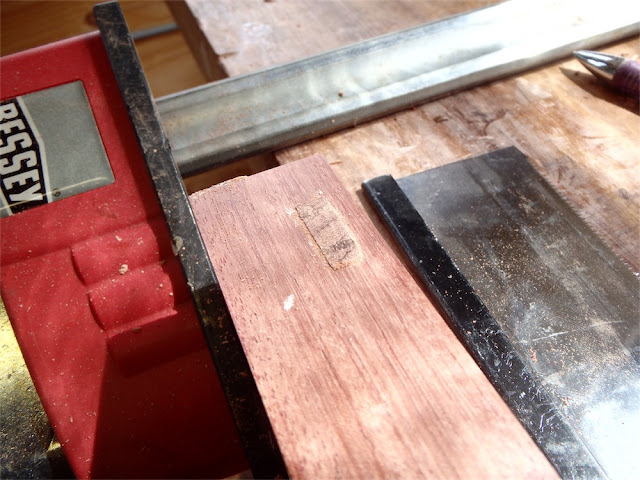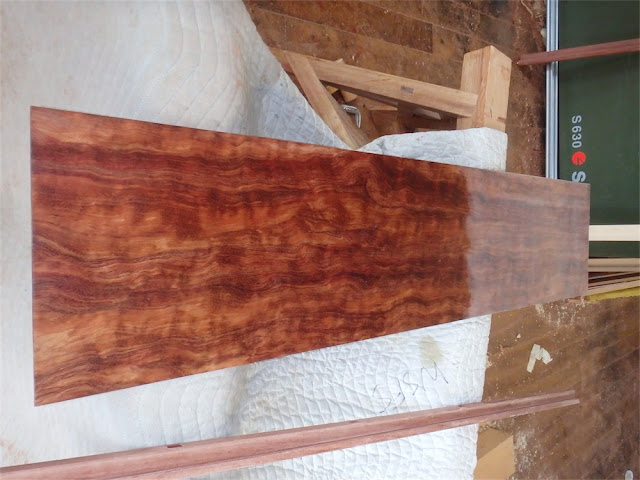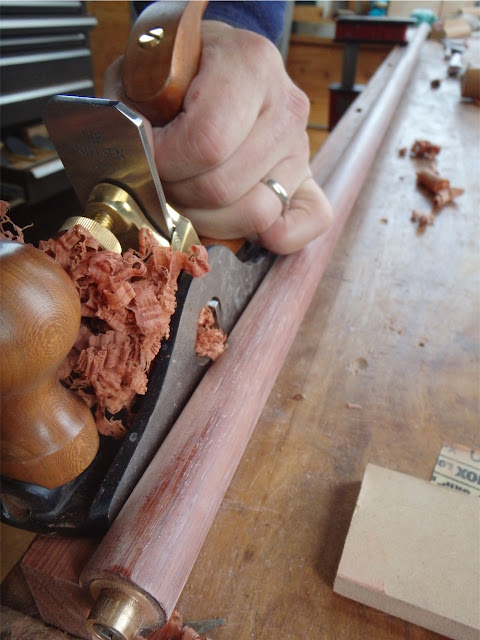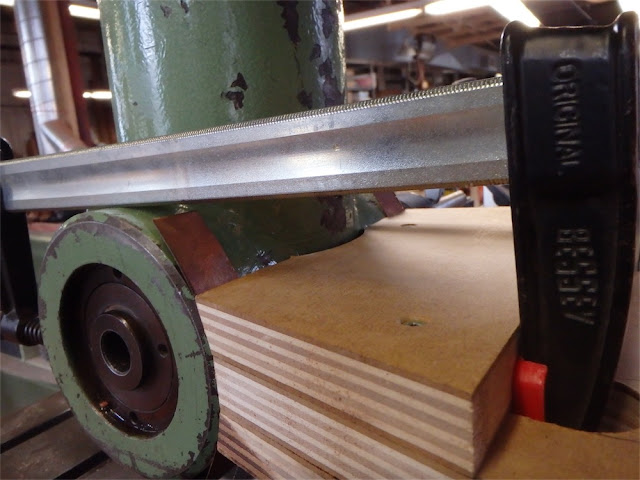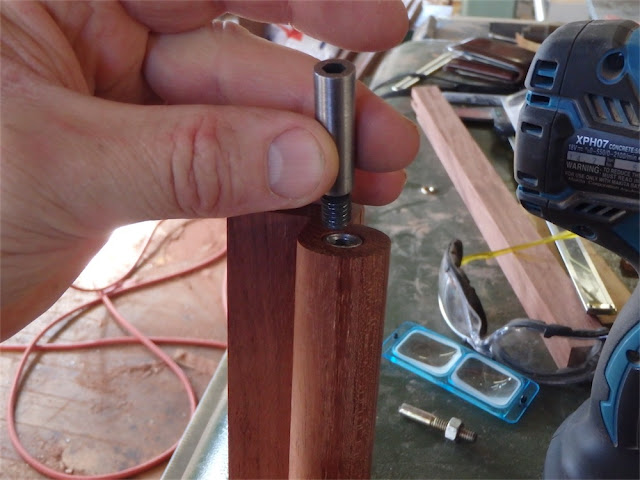Well folks, it’s been a while. I’m still working on these two cabinets., and there is another interesting project also on the horizon.
This winter has been tough sledding. After getting sick for nearly 6 weeks from late January, I had recovered to the 80% health mark, only to catch another bug from my son who goes to daycare, which is, apparently, where all the best bugs can be found. That lasted a week or so, and then I caught - believe it or not - a third bug, though this time the effect was moderate. My wife was not so lucky with #3 and is suffering with a brutal cough, and my son, well, he seems to have a permanent runny nose….
With the shop being unheated, and the winter being not the mildest, shop time has taken a serious hit for sure. I’ve been back in the swing of things, more or less, for several weeks now and have continued work on the bifold doors. These doors have consumed vast amounts of time, more than envisioned initially. Funny how that goes. “Oh, just the doors to do now…”.
The time sink is largely due to the mix of frame and panel construction with finish. Unlike the rear panels on the cabinets, which are of very similar construction, the front doors have 4 coats of finish in the front, and that leads to a need for three coats of finish on the back, which leads to finish on the battens, stiles and rails.
Just working on the finish work on the battens is illustrative of the vortex - er, process. The battens are strongly chamfered on their outer arrises, and that gives 5 surfaces on each batten requiring finishing and then sanding in preparation for subsequent coats of finish. With 8 doors, 4 battens per door, there are 32 battens. Five faces per batten is 160 faces, then 3 coats of finish is 480 rounds of work, then followed by applying ways and then steel-wooling the cured wax afterwards. Then the batten tenons ned kerfing with a saw, 4 kerfs each piece… you get the picture. Battens last for days.
I find such work to be repetitive, to say the least, and funny enough, while working away I find myself making such calculations as noted in the preceding paragraph.
Of course, having missed some 6 weeks of shop time, I had a certain anxiety about getting stuff done, like yesterday, however I just can’t rush anything with these doors as they are one of the most important visual aspects of the entire piece and I want them to turn out well. Smooth and steady wins the race. A few days into my return I feel I have settled into a patient rhythm.
Anyway, some out there might be wanting to see pics, and I am here to oblige in that regard.
In the first picture, I am using my OF1010 router to trim proud wedged tenons on a completed door glue-up:
The result:
Normally I use my flush cutting saw and then plane or chisel for this task, however my flush cutting saw is currently in a box, about to be shipped to Japan along with about a dozen other saws for some sharpening, so it is not available. The router was great for this task however, and super fast.
The end tenons did not have adequate support surface for convenient router work, so I used a regular saw to trim them close:
A chisel then completes the task:
Here’s a recently glued-up door, in this case the leftmost one from cabinet #2:
I clamp the glue-up - put together otherwise on the sawhorses - between a couple of aluminum box sections atop the large tablesaw surface in an effort to keep the door as flat and straight as possible while the glue dries.
Here are the two middle panels from the client’s cabinet, meeting in the middle, frame to frame, for the first time:
Hope that conveys a sense of how these door panels are going to look now that they are in finish.
The pictures today are a little bit random in order, so please bear with me.
My technique for marking out the flared mortises on the door stiles is not to do so based on measured offsets, but to dry-assemble the frame and then use a spacer to hold a small engineer’s square off of the tenon side:
I pull the spacer out, and then mark the line. The mortises were sized a little long to facilitate fitting the parts together, so the layout method compensates for any irregularities in the positioning of the tenons or location of mortise end walls.
The stiles are then separated from their connecting members and then the mortises can be flared. I use an angled paring block to guide the chisel:
The same block also works on the hinge stiles:
As the stiles will be given three coats of finish before assembly, they are also finish planed at this stage:
The hinge stiles have a circular section hinge rods built in, and these are prepared using a couple of sanding blocks I made up using the milling machine:
I used 3M’s #90 Hi-Strength trim adhesive to affix sandpaper to the blocks. One block has #220 paper, the other #320 paper. I use the air compressor to blow them off frequently to prolong their useful life.
If I were doing more than 4 stiles with these rounded rods incorporated, I might have looked at getting a special plane made, but, along with the set of sharpening stones that goes with that, it seemed more practical to make sanding blocks. The finish off of the shaper was quite clean, so only minimal work was required.
Here’s on of the door panels, with wax applied to half the panel - so the ‘lights on’ aspect is clear to see:
More planing - the LN Cabinetmaker’s scraping plane saw some use to trim the back sides of the hinge stiles against the cylindrical rods:
That plane cuts well, but I find the main handle does not hold side tilt position no matter how much one might dare to tighten the brass screw, so I found the handle would sometimes cant over suddenly and I skinned my pinky finger more than once. Not especially fond of bleeding all over the bubinga. The front handle also won’t hold position, so it is not of much help.
A snowstorm tomorrow is in the cards, jeez, so another monkey wrench in the schedule. I’ll try to update the blog more regularly than in the past couple of months. I’m ready to glue up two more doors in the next shop session, which will mean 5 will be completed very soon, so I am confident to be done with the doors entirely by late next week.
Thanks for visiting the Carpentry Way.
via Tumblr https://davidpires578.tumblr.com/post/159022480789



